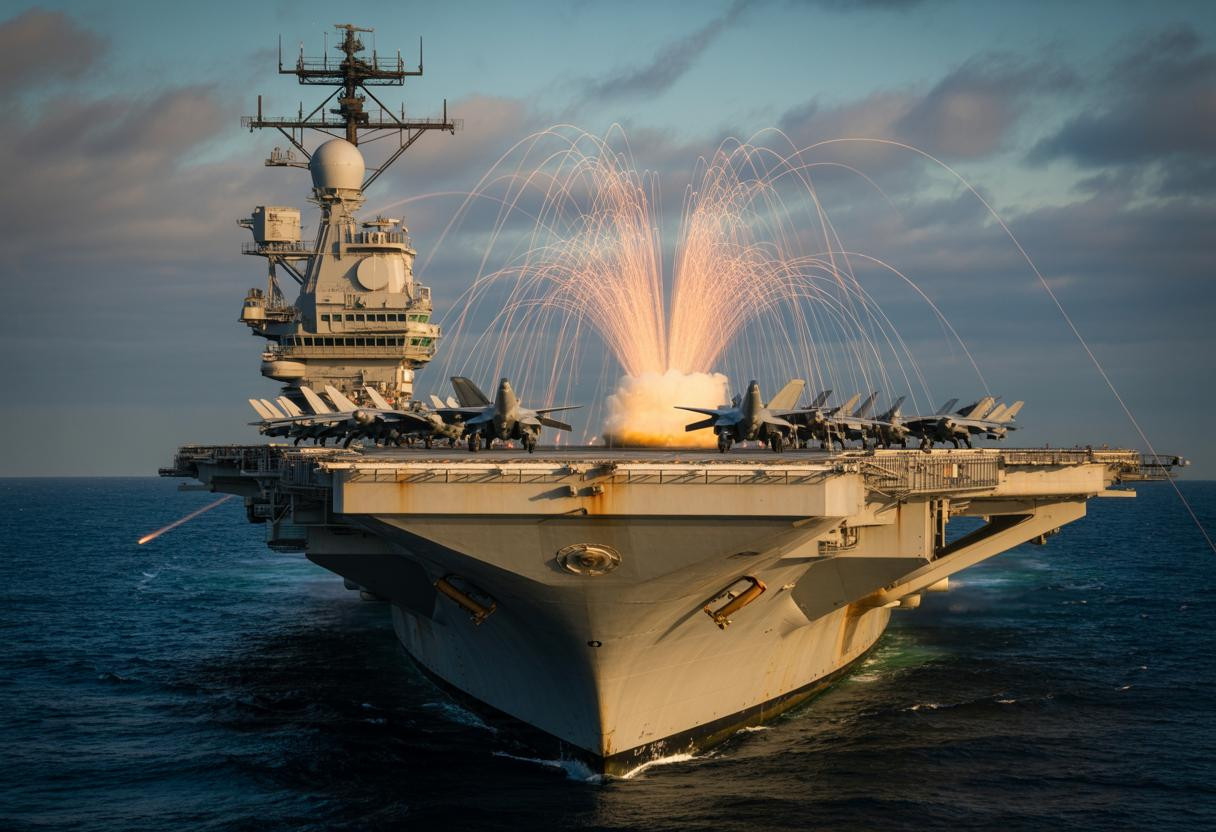The USS Gerald R. Ford represents the most technologically advanced warship ever built, costing $14 billion and featuring revolutionary systems that could redefine naval warfare. This floating fortress generates enough electricity to power 260,000 homes while launching aircraft at rates 25% higher than previous carriers, positioning America’s naval dominance for the next 50 years.
The revolutionary technology behind America’s newest supercarrier
Commissioned in 2017, the Ford-class carrier breaks from decades of steam-powered tradition with its Electromagnetic Aircraft Launch System (EMALS). Unlike the hydraulic catapults of Nimitz-class ships, EMALS uses electromagnetic energy to smoothly accelerate aircraft from zero to 165 mph in just 300 feet.
The ship’s dual A1B nuclear reactors produce 600 megawatts of electricity – three times more power than previous carriers. This massive energy output enables advanced systems like the dual-band radar suite (AN/SPY-3 and AN/SPY-4) that provides 360-degree coverage against hypersonic missiles and traditional threats simultaneously.
Captain Rick Burgess emphasizes that “the synchronicity during training operations has been remarkable,” highlighting how structured training protocols optimize crew performance across these complex systems.
Strategic positioning reshapes Pacific power dynamics
Deterrence through technological superiority
The Ford’s deployment to the Indo-Pacific as part of Carrier Strike Group 12 sends a clear message to adversaries. Its advanced sensor networks integrate seamlessly with allied systems, creating an interconnected defense web that enhances multinational coordination – much like how advanced sensor networks improve operational effectiveness in high-tech environments.
Compared to China’s Shandong-class carriers, the Ford maintains significant advantages in radar capability, launch systems, and nuclear endurance. Russian carriers lack equivalent technological sophistication, relying on outdated steam propulsion and limited air wing capacity.
Operational readiness meets reality
Despite impressive specifications, the Ford faced early reliability challenges with EMALS achieving only 181 cycles between failures versus the required 4,166. Recent training exercises demonstrate these issues are being resolved through intensive crew optimization programs.
Economic implications reveal hidden costs and benefits
The Ford’s $14 billion price tag initially raised eyebrows, but Navy projections show $4 billion in savings over 50 years through reduced crew requirements and maintenance needs. The carrier operates with 4,539 personnel compared to 5,000 on Nimitz-class ships.
However, like other cutting-edge military systems, the Ford requires substantial infrastructure investments that weren’t immediately apparent during initial planning phases.
Future challenges demand adaptive strategies
The Ford must evolve to counter emerging threats including hypersonic missiles, drone swarms, and AI-guided weapons. Integration of directed-energy systems and enhanced automation will be crucial for maintaining carrier relevance in future conflicts.
Personnel operating under extreme pressure during hypersonic missile encounters will need mental resilience techniques to maintain peak performance when seconds determine mission success.
The verdict on America’s floating fortress
The USS Gerald R. Ford represents both triumph and challenge – a technological marvel that demonstrates American engineering prowess while highlighting the enormous costs of maintaining naval supremacy. Its success will ultimately be measured not in specifications, but in its ability to deter conflict and protect American interests across increasingly contested waters. The Ford doesn’t just carry aircraft; it carries the weight of America’s naval future.
